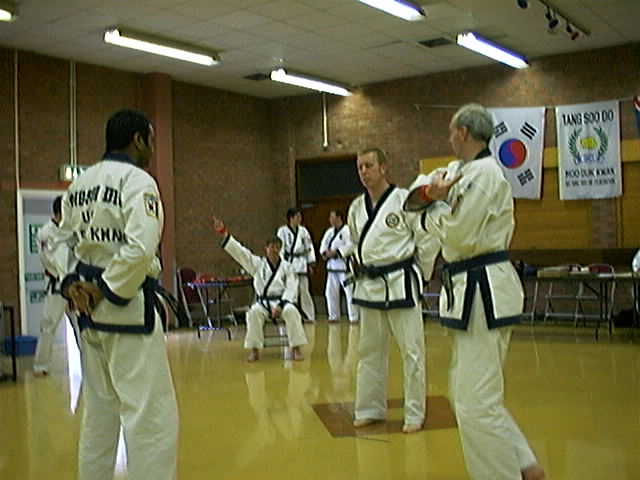
During the , wandering monks from China introduced Buddhism to Korea. Some of these were accomplished martial artists. As indeed they had to be for their own safety. There are reliable records of them teachng lay people martial arts.
The Silla Dynasty (A.D. 668 - 935) was a period when martial arts expanded rapidly in Korea. The Kingdom of Silla was one of three kingdoms in Korea. It occupied the south-eastern part of the Korean Peninsula. It was notable for the military prowess of its young warrior class, the Hwa Rang. The 5 basic principles of Tang Soo Do derive from the principles of these elite warriors.
At the beginning of the Yi Dynasty (A.D. 1390-1907) the National Martial Arts Manual - "Moo Yei Do Bo Tong Ji" - was published. At this time "Soo Bahk Do" or "Way of Hand Fighting" became widely used. During the Japanese occupation of Korea (1907-1945), the practice of native martial arts was prohibited. This forced many Korean Soo Bahk Do Masters to emigrate or else practice secretly.
Following the 1945 liberation of Korea, the Moo Duk Kwan - "Institute of Martial Virtue" - and 4 other martial art schools were formed. The Moo Duk Kwan and Chi Do Kwan later formed the Korean Soo Bahk Do Association in 1960 to develop the study and practice of traditional Korean martial arts. Tang Soo (Soo Bahk) Do has since spread throughout the world. The International Tang Soo Do Federation Moo Duk Kwan (ITSDF) was formed in 1989 to unite and develop Tang Soo Do world-wide. The United Kingdom Tang Soo Do Federation currently serves as its administrative and technical headquarters.